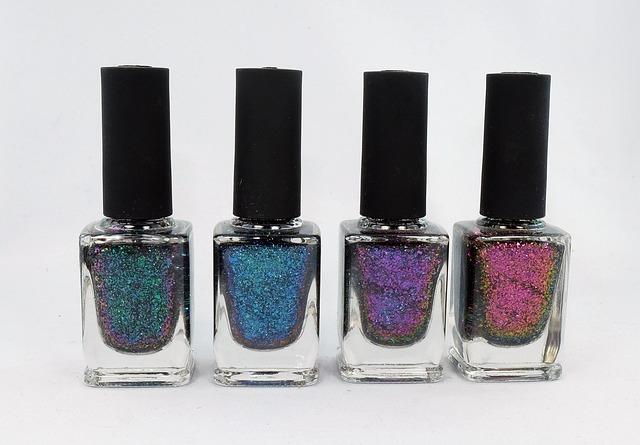In a world where personal expression is celebrated and individuality is painted in vibrant hues, nail polish stands as a beloved accessory in the beauty arsenal. Yet, beneath its glossy allure lies a complex concoction of chemicals that may harbor hidden dangers. As the brush sweeps across each nail, a silent question emerges: could this small act of adornment be a gateway to long-term health concerns? In this exploration, we delve into the chemistry of nail polish, peeling back layers of color to reveal the potential risks that lie beneath the surface. With an authoritative lens, we examine the scientific evidence, scrutinize the industry’s safety standards, and provide insights into how these colorful bottles might affect our well-being over time. Join us as we navigate the intersection of beauty and health, uncovering the truths that every nail polish enthusiast deserves to know.
Unveiling the Hidden Chemicals in Your Favorite Nail Polish

While the allure of a fresh manicure is undeniable, it’s crucial to delve into the potential risks lurking beneath those glossy layers. Many popular nail polishes contain a cocktail of chemicals that could be more sinister than they appear. Among the most concerning are the so-called “Toxic Trio“:
- Formaldehyde: Often used to harden polish, this chemical is a known carcinogen that can lead to respiratory issues.
- Toluene: Essential for a smooth application, it can affect the central nervous system and cause dizziness or headaches.
- Dibutyl Phthalate (DBP): Used to add flexibility, it’s linked to reproductive problems and endocrine disruption.
Beyond these, there are other chemicals like camphor and ethyl tosylamide, each with their own health implications. As the industry evolves, many brands are now opting for “5-free” or even “10-free” formulas, eliminating some of these harmful substances. It’s time to scrutinize the labels of your beloved nail products, prioritizing your health over aesthetics. Stay informed and choose wisely, as the sheen of your polish should not come at the cost of your well-being.
Understanding the Health Risks Associated with Nail Polish Ingredients

Nail polish, a staple in many beauty routines, may contain ingredients that pose potential health risks. It’s crucial to be aware of these components to make informed choices. Among the most concerning are the “toxic trio”: toluene, formaldehyde, and dibutyl phthalate (DBP). These chemicals are known for their harmful effects, such as respiratory issues, skin irritation, and even potential links to more severe health problems like endocrine disruption and cancer.
- Toluene: Often used for a smooth application, this solvent can affect the central nervous system and may lead to headaches and dizziness.
- Formaldehyde: Used as a hardening agent, it is a known carcinogen that can cause allergic reactions and respiratory issues.
- Dibutyl Phthalate (DBP): This plasticizer, banned in some countries, is linked to hormonal disruptions and reproductive issues.
When selecting nail polish, consider opting for brands that are labeled “5-free” or “7-free”, which omit these and other harmful chemicals. By staying informed and choosing safer alternatives, you can enjoy beautifully painted nails without compromising your health.
Expert Recommendations for Safer Nail Care Choices
When it comes to nail care, being informed about the products you use is crucial. Experts advise opting for nail polishes that are free from the “toxic trio”—formaldehyde, toluene, and dibutyl phthalate (DBP). These chemicals have been linked to various health concerns, and choosing products labeled as “3-free” or “5-free” can significantly reduce potential risks.
- Read Labels Carefully: Look for nail polishes that explicitly state they are free from harmful chemicals.
- Consider Water-Based Options: These are often less harsh and a safer alternative to solvent-based polishes.
- Ventilation is Key: Always apply nail products in a well-ventilated area to minimize inhalation of fumes.
- Take Breaks: Give your nails a break from polish to allow them to breathe and reduce exposure to chemicals.


